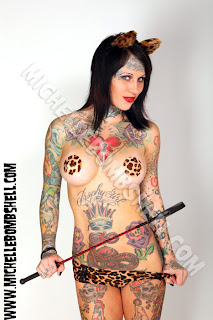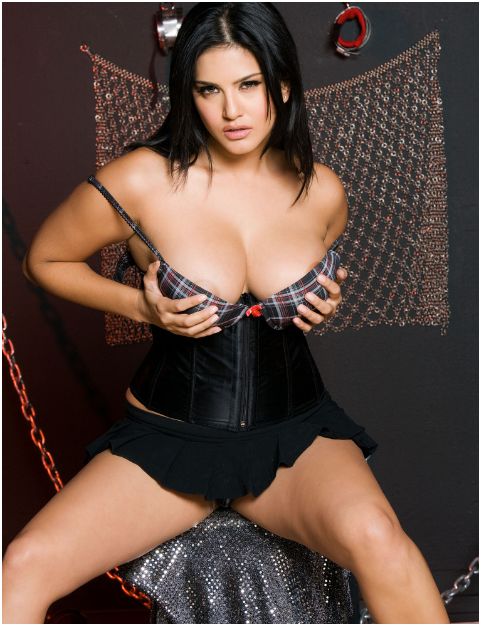Sunday 20 July 2008
César at the Cartier Foundation curated by Jean Nouvel
Fondation Cartier - César Anthologie par Jean Nouvel
8 July to 26 October 2008
The Fondation Cartier presents a major exhibition of the work of French sculptor César on the tenth anniversary of his death. Jean Nouvel —the Fondation Cartier’s architect and a close friend of the artist—has been invited to curate this exhibition, offering a fresh perspective on the work of an artist who passionately explored the formal and expressive possibilities of industrial materials. Through this exhibition, the Fondation Cartier will celebrate an artist who played a major role in its history, from its inception in 1984 until his death in 1998. It will include nearly one hundred of the most significant works from four major groups: the Fers, the Compressions, the Empreintes humaines, and the Expansions. Influenced by the examples of great artists of the past, yet imbued with a sense of the radical and innovative, César’s work defies conventional ways of thinking about sculpture and has profoundly impacted the art of today.
Jean Nouvel and César employed the hydraulic press, expanded polyurethane foam and castings of the human body to realize works he called Compressions, Empreintes humaines and Expansions. These techniques led the artist to reduce the intervention of his own hand in the creation of his works, allowing him to seize upon reality in a direct manner. César’s formal training led him to question the significance of this new approach,which became the subject of many discussions with his friend Jean Nouvel concerning the nature of a work of art: “Can a work of art that does not show evidence of craftsmanship still be considered art?” César was faced with an inner conflict clearly described by Catherine Millet: “César, as classical as his spirit may be [...], as attached as he is to the importance of craft, has found himself caught in a dilemma; he has discovered that sculpture is not just an art of accurate proportions and beautiful materials to be touched, it may also be an idea.” Known for an approach to architecture that favors the immaterial and the minimal, Jean Nouvel has appropriately chosen to place particular emphasis on the conceptual aspects of César’s work. In a rigorous exhibition design, he has chosen to focus upon what he considers the most innovative bodies of the artist’s oeuvre, not according to chronology, but to genre.
César, Giallo Naxos 594, 1998, Photo : Aurelio AmendolaCourtesy: César Administration / Stéphanie Buzutil© Cesar © Adagp, Paris 2008
To learn more: http://www.fondation.cartier.com/
Fashion in the mirror: Photographer's Gallery in London
Fashion in the mirror: Photographer's Gallery in London
18 July - 14 September 2008
I recently went to this exhibition and I have to say it's quite good. I particularly enjoyed the photographs by Tim Walker always containing glamour, poetry and beauty. Many photographs in this exhibition are famous, for instance the gayish pictures by Steven Klein of Tom Ford that caused controversy.
"The international photographers in this exhibition undress the theatre of fashion and question the creation of perfect beauty. Fashion in the Mirror is an overview of their self-examination and a rare look behind-the-scenes of fashion photography from the 1950s to the present day.
Finding both comedy and poetry in the set-up of the studio, the exhibiting photographers turn their cameras on the processes and paraphernalia of the fashion shoot. Photographers become mirrored in their own work and, as viewpoints are inverted and gazes misdirected, cameras stare back out at us expectantly.
Revealing the fashion industry’s secrets and undermining its glamorous illusions, the photographers in this exhibition create work that exposes this world from within.
The exhibition will feature work by leading international photographers;
Mario Testino (Peru, b. 1954); Richard Avedon (US, 1923 – 2004); Nick Knight (UK, b.1958); Juergen Teller (Germany, b. 1964); Steven Klein (US, b. 1962); Bert Stern (US, b. 1929; Steven Meisel (US, b. 1954); Helmut Newton (Germany, 1920 – 2004); Irving Penn (US, b. 1917); Norman Parkinson (UK, 1913 – 1990), Terence Donovan (UK, 1936 – 1996), Melvin Sokolsky (US, b.1933), Tim Walker (UK, b.1970), Bob Richardson (US, 1928 – 2005), Grégoire Alexandre (France, b.1972), William Klein (US, b.1928), Harri Peccinotti (UK, b.1938), Jonathan de Villiers (UK, b.1968), and Saul Leiter (US, b.1923); John Rawlings ( US, 1912 – 1970); and Inez van Lamsweerde (The Netherlands, b. 1963) & Vinoodh Matadin (The Netherlands, b. 1961). "
To learn more: http://www.photonet.org.uk/
Saturday 19 July 2008
Exclusive interview with photographer Yannis Bournias



 Copyright Yannis Bournias
Copyright Yannis BourniasCan you introduce yourself and your background ?
I 've always liked to observe and "watch" people and things in a voyeristic way. I guess that's why I became a photographer.
Where do you get your inspiration ?
I get inspired from everything that you can imagine. A movie, a painting, people in the streets, people in my fantasies, books, music.
Would you feel closer to the contemporary art world or to the fashion world ?
Art is the only truth I have ever met in my life (and love) but it has nothing to do with fashion. The fashion world is vain, superficial, ephemeral, stupid, loud, shallow, but wonderful. I don't know if I will be photographing fashion for ever. I don't believe it is something one should do forever. I believe though that I will be photographing people for ever.
How would you describe yourself and how would you describe your art?
I don't like to talk about myself. But, I am tall, handsome and with a big nose ! My art comes from inside. It is very honest. And tense. But simple.
What other photographers, artists, designers do you feel close to?
I don't feel close to any photographers, artists, or designers. I love Caravaggio, Turner, Rothko, Bacon, Schiele, Giacometti, Hopper and Moore. I love all the Russian avant garde. I ADORE MAN RAY. I believe that John Deakin was a great photographer. Francesca Woodman was very interesting. Nan Goldin is also one of my favourites. I repspect and admire the work of Lorca di Gorcia. I like very much Mario Sorrent and lately , I found the work of a painter called Timothy Sarson, in his first solo show called Nexus - amazing headdrawings - very interesting. (Astra Gallery, Athens.)
How far do you hope to go artistically speaking?
Can you tell us about your current and upcoming projects ?
I have recently finished a project. It is a series of photographsall taken at night. It will probably be called Quiet City and hopefully exhibited soon!
Would you consider to do something else if you were not an photographer?
I would like to be a painter, or a film director. Sometimes a singer !
Do you consider that "art is alive" ?
ART WILL NEVER DIE. IT IS LIKE WARM BLOOD. ALWAYS MOVING.
To finish with, what would wish to this blog?
I wish to this blog to be alive and kicking !



Monday 14 July 2008
Olafur Eliasson in New York



 Photo: Vincent Laforet for The New York Times
Photo: Vincent Laforet for The New York Times
The second project in New York is the Waterfalls exhibition in various places of the City. The Public Art Fund commission involves four towers of scaffolding, ranging from 90 to 120 feet, situated in NYC's East River, including locations under the Brooklyn Bridge and on Governors Island. Olafur returns to his sources with these installations which focuses on water and their relationship with the New York landscape.

Serpentine Gallery Pavilion 2008 designed by Frank Gehry

20 July – 19 October
The Serpentine is really active this summer. First there was Richard Prince and an exhibition that attracted a lot of celebrities, especially at the glamourous dinner organised by LVMH the night before the opening for press and some vips. Apparently Radiohead attended, and I saw myself Valentino...
In fact the construction work has begun on the Serpentine Gallery Pavilion 2008, which will give England the first built project by legendary architect Frank Gehry, opening 20 July. Gehry and his team took inspiration for this year’s Pavilion from a fascinating variety of sources including the elaborate wooden catapults designed by Leonardo da Vinci as well as the striped walls of summer beach huts. Part-amphitheatre, part-promenade, these seemingly random elements will make a transformative place for reflection and relaxation by day, and discussion and performance by night.

Frank Gehry said: "The Pavilion is designed as a wooden timber structure that acts as an urban street running from the park to the existing Gallery. Inside the Pavilion, glass canopies are hung from the wooden structure to protect the interior from wind and rain and provide for shade during sunny days. The Pavilion is much like an amphitheatre, designed to serve as a place for live events, music, performance, discussion and debate. As the visitor walks through the Pavilion they have access to terraced seating on both sides of the urban street. In addition to the terraced seating there are two elevated seating pods, which are accessed around the perimeter of the Pavilion. These pods serve as visual markers enclosing the street and can be used as stages, private viewing platforms and dining areas."
Julia Peyton-Jones, Director, and Hans Ulrich Obrist, Co-Director said: "It is an exciting moment that work has begun on Frank Gehry’s visionary scheme. His Pavilion is remarkable and will be a landmark for London this summer."
The Pavilion will be the architect’s first built structure in England. He is collaborating for the first time with his son Samuel Gehry. Since 2001, Peter Rogers, Director of Stanhope, has donated his expertise to all aspects of the Serpentine Gallery Pavilions and he continues to play a major role. The Pavilion is a fully accessible public space in the Royal Park of Kensington Gardens, attracting up to 250,000 visitors every Summer and is accompanied by an ambitious programme of public talks and events.
To learn more: www.serpentinegallery.org/2008/03/forthcoming_summer_2008serpent.html
Friday 11 July 2008
Christian Dior Haute Couture Fall Winter 2008/2009
Here is it is...
To learn more: http://www.dior.com/
Thursday 3 July 2008
Richard Prince at Serpentine

Richard Prince: Continuation 26 June - 7 September 2008
Richard Prince (born 1949) is one of the world’s most celebrated artists and artistic innovators.
Prince came to prominence in the 1980s through his celebrated series such as Cowboys, Jokes and Hoods, which appropriate images from magazines, popular culture and pulp fiction to create new photographs, sculptures and paintings that respond to ideas about American identity and consumerism. These works have been critical in challenging ideas of authorship and raising questions about the value of the ‘unique’ artwork.
Prince is, himself, a voracious collector of art, furniture, memorabilia and books, which he houses in a group of buildings alongside his own artworks. His exhibition at the Serpentine is a direct dialogue with his spaces, mirroring the installation of Prince’s work in his own buildings as well as responding to the Serpentine’s unique scale and location. Prince’s diverse collection ranges from books and artworks by artists and writers to classic American ‘muscle cars’. Paintings, photographs and sculptures spanning Prince’s 30-year career are featured at the Serpentine, including new work created especially for this exhibition.
Richard Prince: Continuation follows his recent retrospective, Spiritual America, organised by the Solomon R Guggenheim Museum, New York, and is curated by Richard Prince and the Serpentine Gallery.
I have to say that this exhibition is a highlight of this summer's programme of exhibitions and follows the Gagosian's show. A nurse painting can also be seen at Sotheby's a few weeks ago for the Impressionist and Modern Art sale.
The private view for the event was quite interesting as I bumped into Mario Testino, Valentino, and François Pinault (nice rime)... yes I think I really like Richard Prince, and not only because he collaborated with Marc Jacobs. The exhibition at the Serpentine is by the way sponsored by Vuitton.
http://www.serpentinegallery.org/












